Following research I undertook for a talk I presented at Screwfix headquarters on how to reduce plastic use, I realised that as human beings, we’re pretty much addicted to plastic. One definition I found for addiction is this:
“…the state of being enslaved to a habit or practice or to something that is psychologically or physically habit-forming, as narcotics, to such an extent that its cessation causes severe trauma..”
Now, I am not belittling the devastating effects of living with someone who has a drug, alcohol or gambling addiction at all, but it did make me think ‘could we really live without plastic?’ The answer is quite possibly not. It is everlasting, easy to manufacture, robust, never likely to run out, easy to clean, completely versatile and is so entrenched in everything we use – from the plastic keys on my keyboard, through to the sterile medical equipment being used every single day to save lives, it’s hard to imagine a life without it.
So, if we can’t live without it, can we live with a little less? To this I can confidently say yes! In very small and simple ways we – even as individuals – can revolutionise the way we use (and quickly) dispose of plastic, and it can start from the moment we are born.
How To Reduce Plastic Use
#1: Disposable Nappies
There are an estimated 321 million babies aged under two-and-a-half in the world. A baby wearing disposable nappies will use around 5,000 nappies during their nappy-wearing life. That’s equivalent to 130 bin-bags full!
The obvious solution is reusable nappies. So, if you don’t have a baby to wear these funky reusable nappies, remember, they make fantastic gifts too!
PLUS, if you are a parent, you can pass them on to someone else when your little one masters potty training! The very definition of Reduce, Re-use and Recycle
#2: Plastic Straws
Arghhh! The nasty plastic straw. This seemingly innocuous little piece of plastic is causing havoc in our oceans – injuring and killing marine life, so is there an alternative? Well actually, yes! Several of them! The first might come as a surprise, so wait for it…
Don’t use a straw at all!
Now I know this might cause a few sharp intakes of breath, but really, do we ALWAYS need to use a straw, or are we using it ‘just because’?
Of course there will be times, when it is easier to use a straw, or a personal preference (who want’s to leave lipstick on their cocktail glass, after all?) So, what about paper straws, or cool-as-you-like bamboo straws? If you really want to go for it, what about some sleek stainless steel straws or stunning glass straws (which are tougher than you think). The fact is there are alternatives. We just need to get those big name fast food chains to get completely on board too!
#3: Cotton Buds
But it is just a tiny bit of plastic, I hear you say. So tiny, I forgot it was even plastic. And that is exactly my point. Plastic has become so normal, that we don’t even notice it any more, but if we paid just a little more attention to what we are using around the home, we’d soon realise that those little bits of plastic soon add up.
There are some great alternatives to plastic cotton buds, for example cardboard, paper or even simple bamboo cotton buds.
Makes you wonder why the aren’t everywhere already, doesn’t it?!

#4: Toothbrushes
In the United States approximately 850 million toothbrushes are discarded and end up in landfill every single year. In Australia it is estimated to be around 30 million, amounting to approximately 1000 tonnes of landfill each year.
However, there are brushes on the market now that are made from biodegradable products such as bamboo. There is still the issue of the bristles however, many still use plastic bristles, which they say are needed for good oral hygiene. However, if you really do want to go the whole hog (pun completely intended) you are able to buy toothbrushes made of pig or boar hair (which, if you’re vegan, does not solve the issue – unless you want to start using Miswak sewak or Neem sticks – two different ways of cleaning your teeth using stick fibres). And while we’re on the subject of oral hygiene, don’t forget those tiny little flecks of ‘scrubbing power’ in your toothpaste are microbeads of plastic, which you are quite literally washing down the plughole and right into our oceans.
#5: Body and Facial Scrubs
Beat The Microbeads is an international organisation fighting to ban plastic beads in all beauty products. It is becoming well known just how bad microbeads are damaging our water supply, marine life and our food chain.
They state that micro plastics can be found on almost every beach worldwide and even on polar icecaps. There are reportedly over 5 trillion floating pieces of plastic contaminating our waters.
The reason there is so much fuss about microbeads is that they function in the same way as a sponge, and absorb chemicals and pollutants which are ingested by marine animals and of course then work their way up the food chain.
More and more countries are now implementing bans on microbeads (the UK did earlier this year), so what are the alternatives? Well, it’s all about going back to nature. There are some amazing exfoliating scrubs out there using natural products such as oats, nuts, pumice powder, sugar and more. There are also more high-end products offering exfoliating products, so it shouldn’t be difficult to find a product to suit your needs. And if you can find a scrub, find a scrubber! There is a wide selection of exfoliating brushes and pads that offer excellent results without harming the environment.
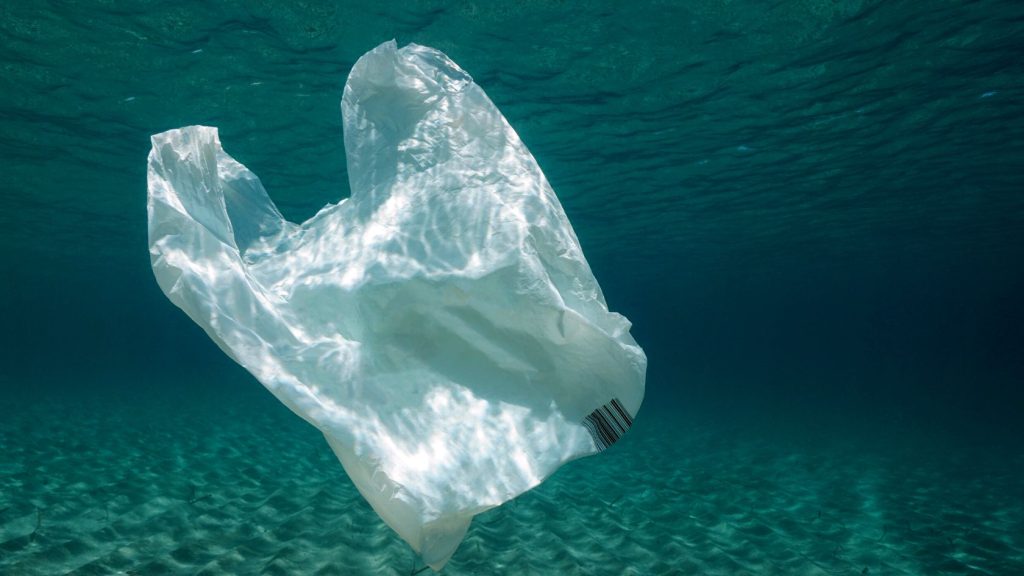
#6: Plastic Bags and Wrap
Of course this is on the list! Everyone knows plastic bags are bad for the environment – we’ve all known for years – which is why it seems crazy that we still use them – for shopping, for packing our groceries, even for wrapping our packed lunches or leftovers. So what are the real alternatives? Well you actually only need to go back just a few decades to see.
Remember how your grandmother would go shopping with her ’embarassing’ shopping trolley or her oversized shopping bag? Perhaps you’re even old enough to remember how the butcher would wrap the meat in paper and tie it firmly with a piece of string, and the fruit and veg would be selected and put into paper bags. Or what about when the shops stored sweets in those massive jars and you could buy a ‘quarter’ and take them away in your little mini paper bag? You can see where I am going with this can’t you? Reducing waste and excess packaging is nothing new. using paper bags, or reusable shopping bags was the least wasteful way to shop – And thank goodness it’s making a return too! If you really don’t need that plastic, don’t use it.
#7: Plastic Bottles
Oh, now here’s another biggie – the plastic bottle. I know it’s convenient, and we can use them again (kind of – if you don’t mind ingesting a few harmful chemicals along the way), but for this ‘use-once’ plastic product it is scary to know:
We’re Now At A Million Plastic Bottles Per Minute – 91% Of Which Are Not Recycled
So what are the alternatives? Well there is glass, aluminium, cardboard and even edible seaweed packaging
Check out this sobering video and read this article which explains why we all need to change the way we use plastics for our drinks. Going back to Granny’s ways of returning milk bottles and pop bottles to the supplier for a few pennies may just be the way to start. Imagine how different things could be now, if we had kept that practice going?
#8: Disposable Cutlery and Plates
Here’s another one! Throw-away, use-once, cutlery and plates. Just imagine how much plastic we could reduce if we used paper cups, wooden cutlery, paper or even these stylish bamboo plates? Then think, how much plastic we could save if big fast food chains took this idea on board too?
One hundred and fifty single-use cups are thrown away every second in France alone – 4.73 billion per year, according to the French Association of Health and Environment, ASEF.
As a result, France became the first country to ban the use of plastic cups and plates. A new French law will require all disposable tableware to be made from 50% biologically-sourced materials that can be composted at home by January of 2020. That number will rise to 60% by January of 2025.
#9: Chewing Gum
We all know chewing gum is a litter problem. You only have to look at most high street pavements to find the familiar chewing gum mortar encrusting the floor, but is that where it stops? Hell no! Did you know that chewing gum alone counts for 100,000 tonnes of Plastic Pollution every year? There’s a reason that chewing gum stays firmly stuck to the underside of tables and chairs around the world…for years and years – it doesn’t biodegrade. The furniture will rot before the gum does – unless of course it’s made of plastic too!
A UK study conducted in 2000 estimated that 250,000 blobs of gum were stuck on London’s Oxford Street alone and a report in 2015 estimated that the cost to local councils of cleaning up chewing gum from UK streets was £56 million.
Did you know that almost all chewing gum on sale today is made from a plastic product made from oil? And you are chewing on that? A few companies have begun making gum from a natural base – a far healthier, environmentally friendly version for everyone!
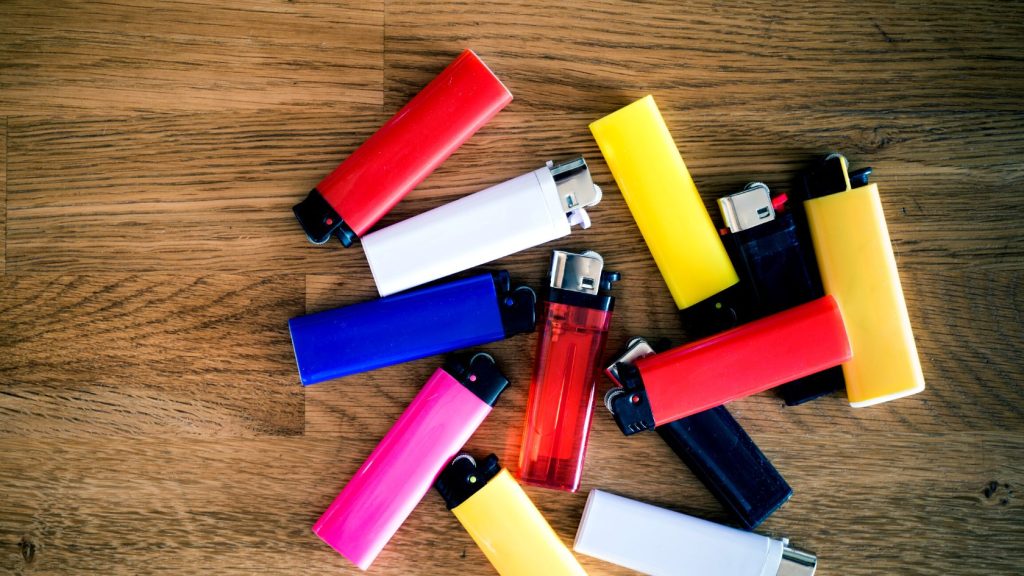
#10: Plastic Lighters
Plastic lighters are another big source of plastic waste. Found in our landfills, our oceans and sadly the stomachs of animals.
One billion lighters are sold per year in the U.S. alone. Americans throw away 350 million disposable lighters a year.
One group of volunteers in New York City, decided to record just how many lighters they found during a 9 month period in a number of waterfront locations (significant, as these would most likely end up in our oceans). They published their results here. A similar experiment was carried out here with equally disappointing results.
The alternatives are very simple – use matches, or use a refillable metal lighter instead.
Here are some facts and figures on marine pollution from the UNESCO website
Land-based sources (such as agricultural run-off, discharge of nutrients and pesticides and untreated sewage including plastics) account for approximately 80% of marine pollution, globally.
Agricultural practices, coastal tourism, port and harbour developments, damming of rivers, urban development and construction, mining, fisheries, aquaculture, and manufacturing, among others, are all sources of marine pollution threatening coastal and marine habitats.
Excessive nutrients from sewage outfalls and agricultural runoff have contributed to the number of low oxygen (hypoxic) areas known as dead zones, where most marine life cannot survive, resulting in the collapse of some ecosystems.
There are now close to 500 dead zones covering more than 245,000 km² globally, equivalent to the surface of the United Kingdom.
Over 220 million tons of plastic are produced each year.
Plastics can contribute to reduce our carbon footprint. They provide improved insulation, lighter packaging, are found in phones, computers, medical devices, etc. but appropriate disposal is often not addressed.
Seven of the EU Member States plus Norway and Switzerland recover more than 80% of their used plastics. These countries adopt an integrated waste and resource management strategy to address each waste stream with the best options. However, waste and disposal remain an issue in most of the world.
The United Nations Environment Programme estimated in 2006 that every square mile of ocean contains 46,000 pieces of floating plastic.
Once discarded, plastics are weathered and eroded into very small fragments known as micro-plastics. These together with plastic pellets are already found in most beaches around the world.
Plastic debris causes the deaths of more than a million seabirds every year, as well as more than 100,000 marine mammals.
Plastic materials and other litter can become concentrated in certain areas called gyres as a result of marine pollution gathered by oceanic currents. There are now 5 gyres in our ocean.
The North Pacific Gyre, known as the Great Pacific Garbage Patch, occupies a relatively stationary area that is twice the size of Texas. Waste material from across the North Pacific Ocean, including coastal waters off North America and Japan, are drawn together.
The Blueprint for ocean and coastal sustainability includes proposals to green the nutrient economy and reduce ocean hypoxia.
Plastic pollution is a massive problem – and one that will unfortunately continue to grow until we, as responsible human beings, turn the tide and change the way we use it. Plastic will never go away (quite literally). It has plenty of long term uses, but we seriously need to find ways to reduce its use by finding sustainable, practical alternatives. There are loads of cool innovative ways to do this. Ways that really only require small adjustments to our habitual use of disposable goods. More and more companies are joining this passionate crusade to tackle this very modern issue, and it is only right that everyone should do their bit to help and make a difference to the future of our planet.
Learn to freedive with Go Freediving
Go Freediving is the longest established, most experienced and friendliest freediving course provider in the UK, led by world class freediving instructor trainer Emma Farrell, and her team of personally trained instructors. No other course provider has such a good instructor to student ratio, safety record and personal touch.
Whether you’re a beginner dipping your toes into the world of freediving, a seasoned pro looking to turn professional, or simply a freediver of any level who wants the best freediving holiday in the world, we’re here for you!
Also check out our online guide, The Beginners Guide to Freediving by clicking here!
Keep in touch with everything Freediving
Subscribe to our mailing list for weekly newsletters with exclusive articles, news, films, offers and more!
And check out You Tube!
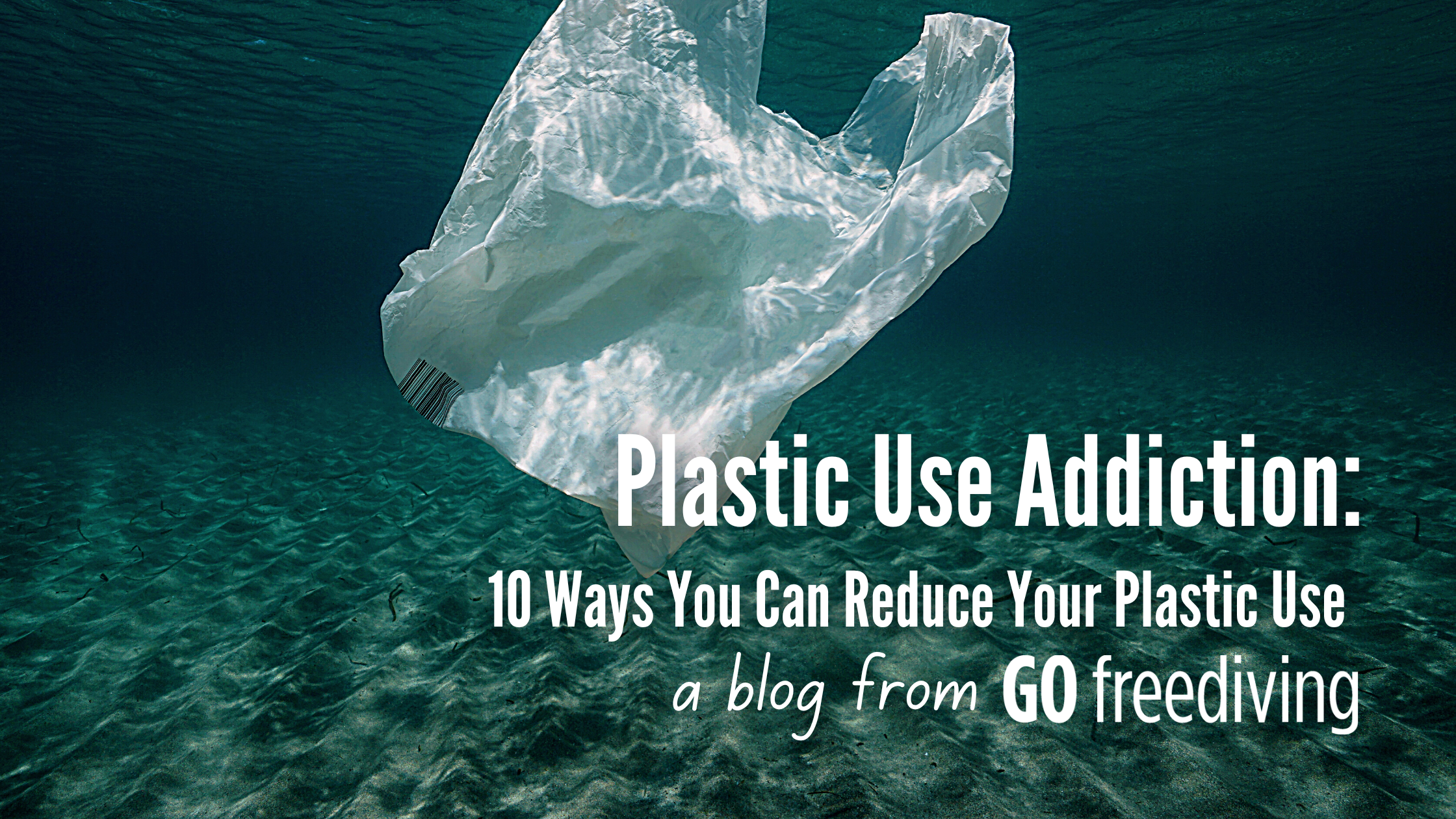
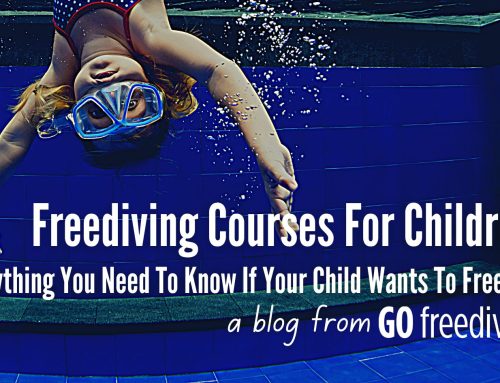
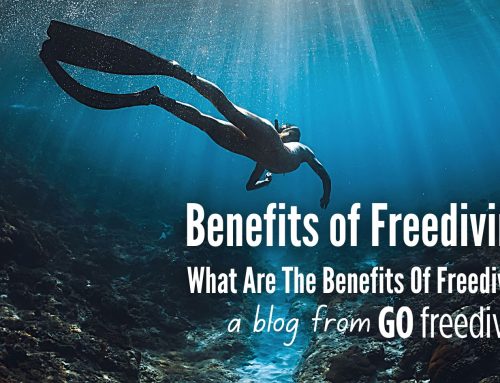

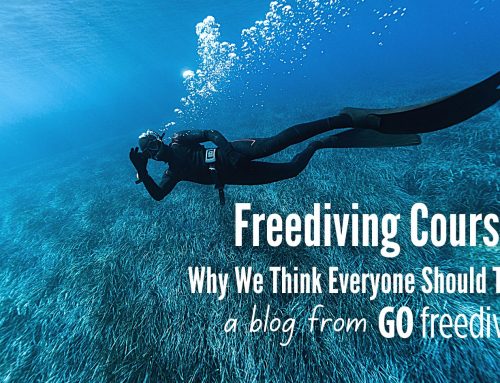
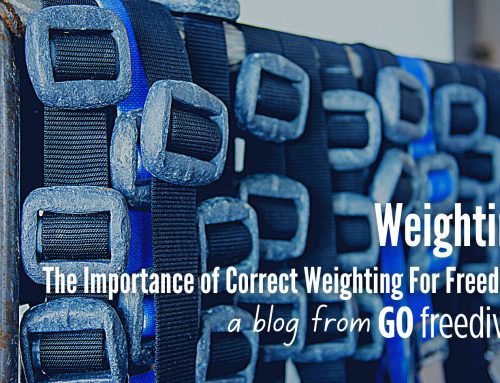
Leave A Comment